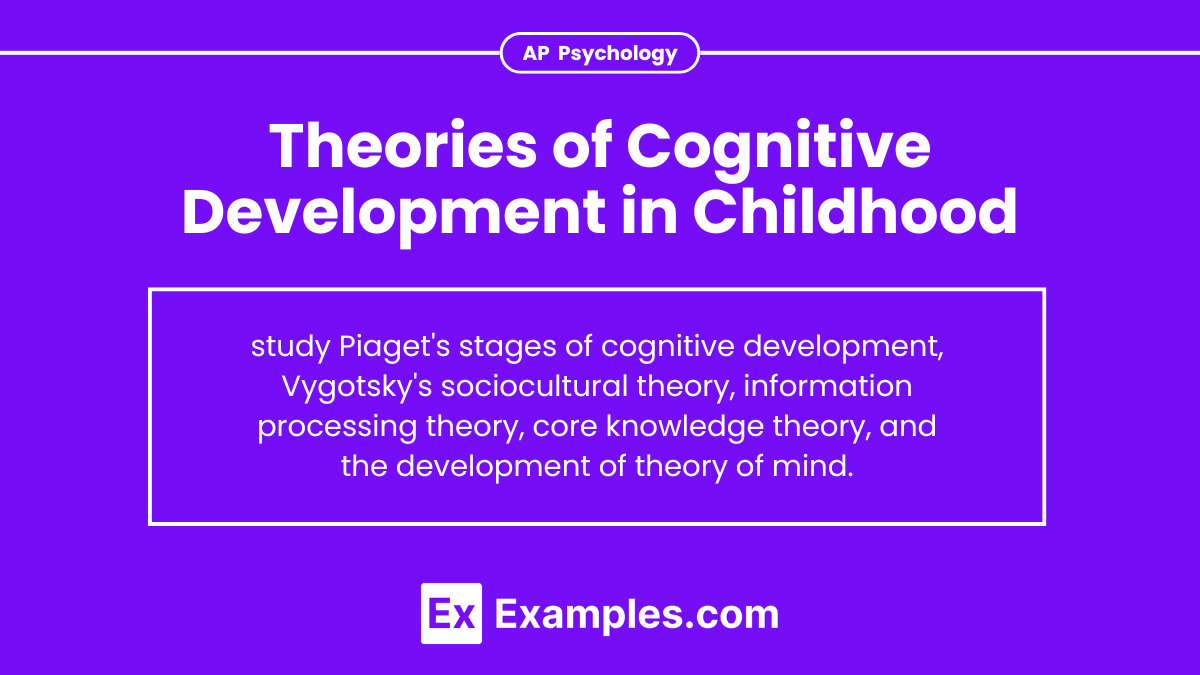Understanding the theories of cognitive development in childhood is crucial for excelling in AP Psychology. These theories provide insights into how children think, learn, and grow. Key theories include Piaget’s stages of cognitive development, Vygotsky’s sociocultural theory, the information processing approach, core knowledge Communication theory, and the development of theory of mind. Mastering these concepts helps explain how children develop intellectually and socially, essential knowledge.
Learning Objectives
Focus on learning the key stages and concepts of Piaget’s cognitive development theory, including schemas, assimilation, and accommodation. Understand Vygotsky’s sociocultural theory, emphasizing the Zone of Proximal Development and scaffolding. Study information processing theory, highlighting attention, memory, and metacognition. Familiarize yourself with core knowledge theory’s innate domains and the milestones in the development of theory of mind. Apply these theories to real-life scenarios and developmental milestones.
1. Piaget’s Theory of Cognitive Development
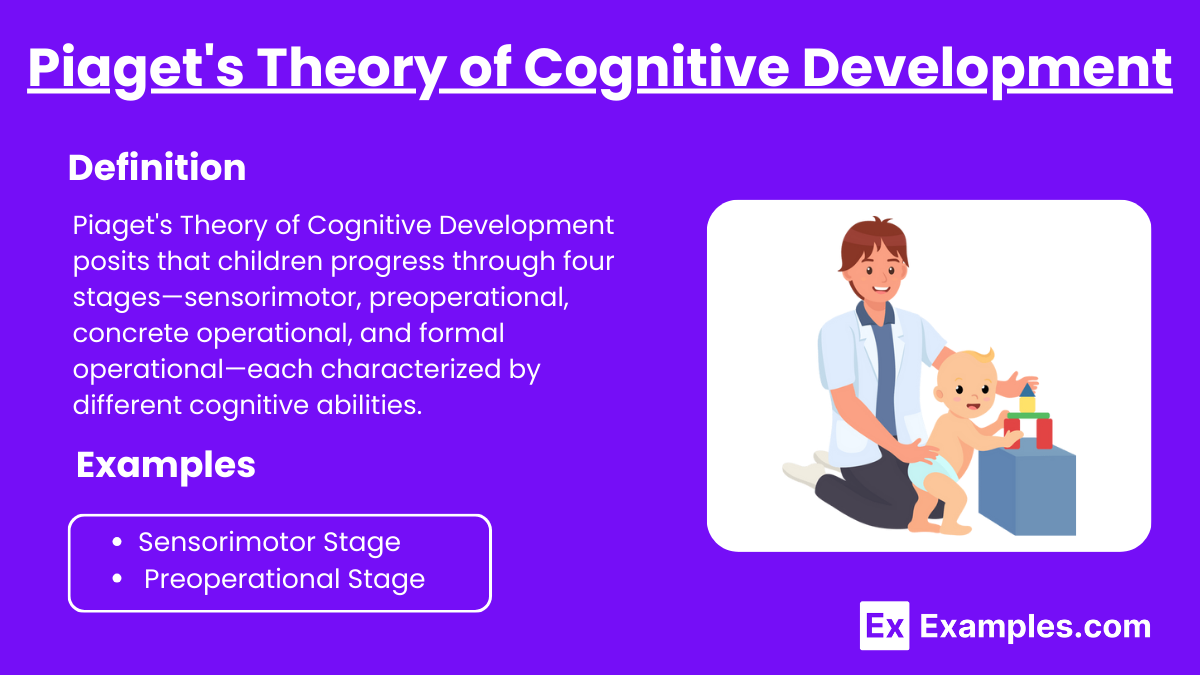
Jean Piaget was a Swiss psychologist known for his pioneering work in child development. Piaget’s theory emphasizes that children go through specific stages of cognitive development, characterized by different abilities and ways of thinking.
Key Concepts
- Schemas: Mental structures or Conceptual Framework that organize and interpret information.
- Assimilation: Integrating new information into existing schemas.
- Accommodation: Modifying existing schemas to incorporate new information.
- Equilibration: The balance between assimilation and accommodation, driving cognitive growth.
Stages of Cognitive Development:
1. Sensorimotor Stage (Birth to 2 years)
- Key Characteristics: Infants learn about the world through sensory experiences and motor actions.
- Important Milestone: Object permanence – understanding that objects continue to exist even when they cannot be seen.
2. Preoperational Stage (2 to 7 years)
- Key Characteristics: Development of language and symbolic thinking but with limitations in logical reasoning.
- Egocentrism: Difficulty in seeing the world from perspectives other than their own.
- Centration: Focusing on one aspect of a situation while ignoring others.
- Lack of Conservation: Inability to understand that certain properties of objects remain the same despite changes in their form or appearance.
3. Concrete Operational Stage (7 to 11 years)
- Key Characteristics: Improved Critical thinking about concrete events.
- Conservation: Understanding that quantity remains the same despite changes in shape.
- Decentration: Ability to consider multiple aspects of a situation.
- Reversibility: Understanding that objects can be changed and then returned back to their original form.
4. Formal Operational Stage (12 years and up)
- Key Characteristics: Development of abstract and hypothetical thinking.
- Hypothetical-Deductive Reasoning: Ability to develop hypotheses and systematically deduce the best path for Problem Solving.
2. Vygotsky’s Sociocultural Theory
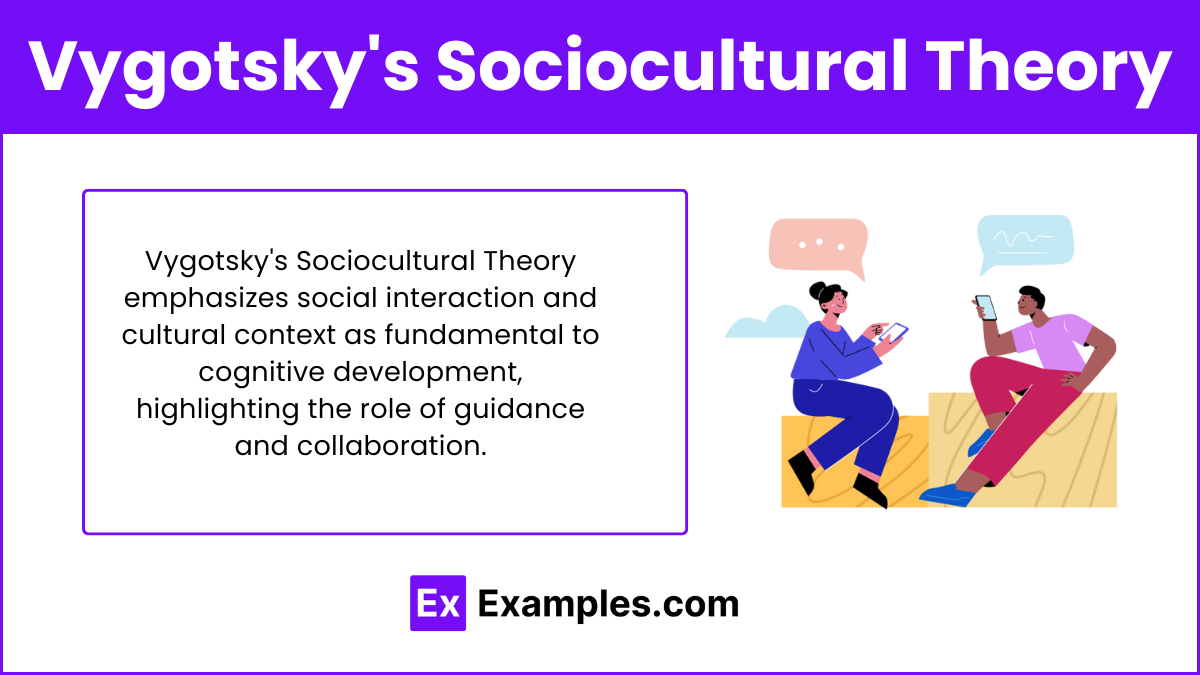
Lev Vygotsky emphasized the social context of cognitive development and the fundamental role of interaction with others.
Key Concepts
- Zone of Proximal Development (ZPD): The range of tasks that a child can perform with the help and guidance of others but cannot yet perform independently.
- Scaffolding: The support provided by more knowledgeable others (parents, teachers) that enables the child to perform tasks within their ZPD.
- Private Speech: Self-talk that guides thinking and action; eventually internalizes as silent inner speech.
Applications
- Collaborative Learning: Encouraging group work and discussions to enhance learning.
- Instructional Scaffolding: Providing appropriate support during the learning process and gradually removing it as the learner becomes more competent.
3. Information Processing Theory
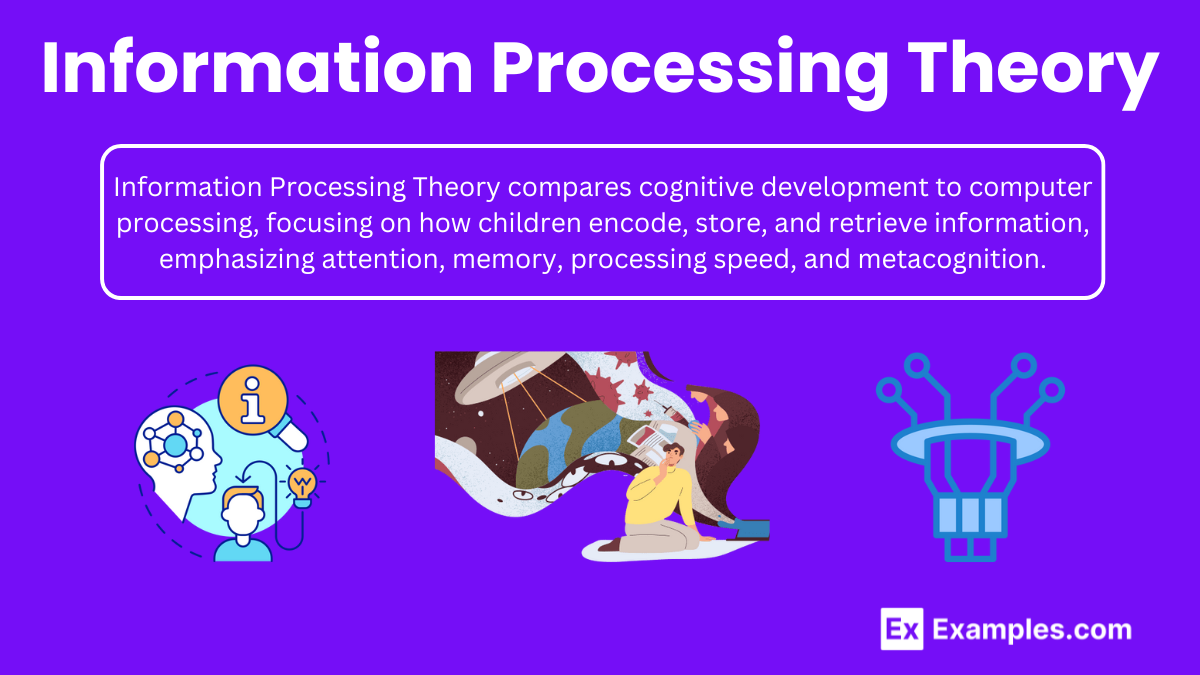
This theory compares human cognition to computer processing, focusing on how information is encoded, stored, and retrieved.
Key Components
- Attention: Focusing mental resources on specific information.
- Memory: The storage and retrieval of information. Includes sensory memory, short-term (working) memory, and long-term memory.
- Processing Speed: The pace at which children can take in and use information, which increases with age and experience.
- Metacognition: Self Awareness and understanding of one’s own thought processes.
Applications:
- Use of Mnemonics: Techniques like acronyms and visualization to aid memory.
- Chunking: Breaking down large amounts of information into smaller, more manageable units.
4. Core Knowledge Theory
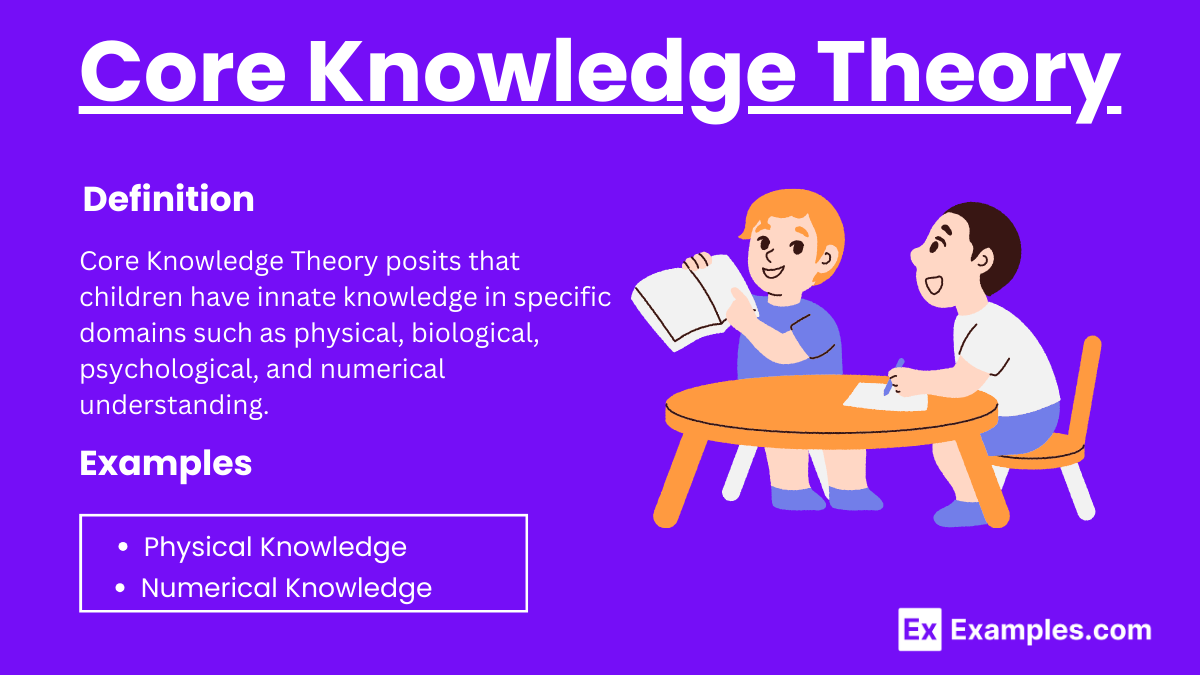
Proposed by researchers such as Elizabeth Spelke, this theory posits that children have innate knowledge in specific domains important for survival.
Key Domains
- Physical Knowledge: Understanding objects and their interactions.
- Biological Knowledge: Recognizing living things and their properties.
- Psychological Knowledge: Awareness of others’ intentions and emotions.
- Numerical Knowledge: Basic understanding of numbers and quantities.
Applications
- Early Education: Tailoring teaching methods to align with these innate domains of knowledge.
5. Theory of Mind

This concept refers to the ability to attribute mental states—beliefs, intents, desires, emotions—to oneself and others and to understand that others have beliefs and perspectives different from one’s own.
Key Milestones
- False-Belief Task: A classic experiment to test theory of mind, where children learn to understand that others can hold beliefs different from reality.
- Developmental Changes: Typically emerges around ages 4-5, marking a significant milestone in cognitive and social development.
Applications
- EducationEnhancing classroom strategies by understanding students’ perspectives and adjusting teaching methods accordingly.
- Parenting : Helping parents understand their children’s emotional and cognitive states, improving communication and conflict resolution.

